|
Making the most of synaesthesia: click images to enlarge.
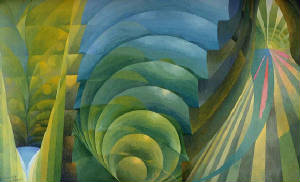
|
| Symphonie Verte, Henry Valensi, 1935 |
We smell cinnamon buns at the airport and we can "taste" them. Just
seeing pictures of food can activate our taste buds. Hearing and seeing often work in unison, broadening and giving depth
to our experiences of sight and sound. Painters who understand synaesthesia somehow imbue their visual images with a kind
of music. Musicians see the colors of their sounds. Isn't it wonderful?
The premise that painting emulates music inspired some of the
great art of the 20th century. And the musical analogy continues in music videos, experimental film, reflective
lightworks, and laser installations.
Though our five senses are compounded, music holds
a special place in heightened states, and visual music is all around us. In digital media, music and visual art truly are
united. They are created out of the same stuff– bits of electronic information and infinitely interchangeable.
The early synaesthist painters were inevitably accomplished musicians. Paul Klee was a violinist; Wasilly Kandinsky
was a pianist.
Arthur Dove listened
to popular music in his studio while doing his "jazz paintings" in the twenties. His "Improvisation"
(conflating the words improvise and
vision) signifies the musical analogy central to his work. Dove’s
last work, "Primitive Music," in 1944, embodies his belief in the primal power of music– in color, line, vibration,
balance, tension, and release.
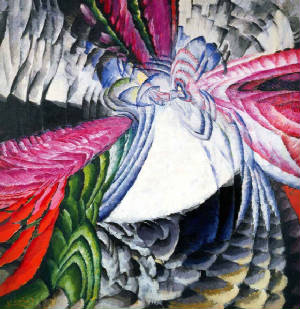
|
| Motifs Two, Frantisek Kupka, 1913. |
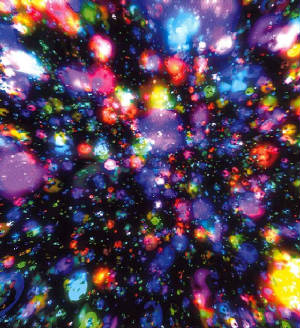
|
| Swell installation detail, Jennifer Steinkamp, 1995 |
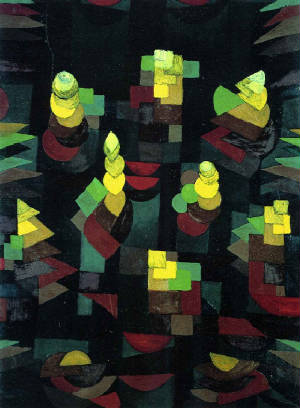
|
| Plant Growth, Paul Klee, 1921 |
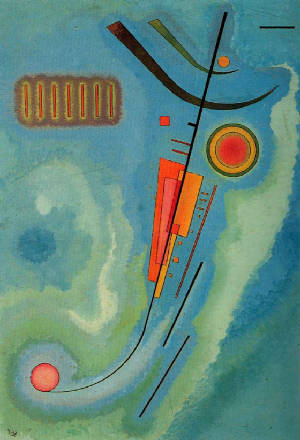
|
| Light, Wassily Kandinsky, 1930 |
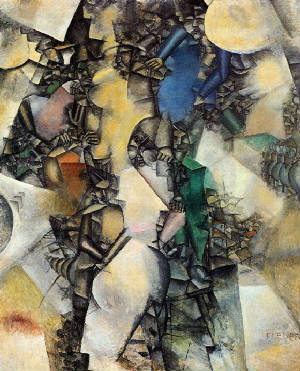
|
| The Wedding, Fernand Leger, 1910 |
One sense can trigger another.
Can you hear music in a painting?
Do you see when you listen?
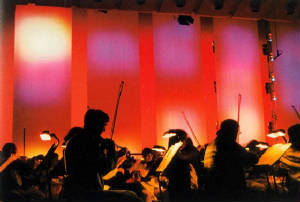
|
| Performance of Scriabin's Promethee, 1997 |
Fine writing also embodies the inherent cadence, rhythm, and flow of music.
Of writing "Sounds," his book of poems, Kandinsky said:
"This is for me, a change of instrument, the palette to
one side and the typewriter in its place. I use the word instrument because the force which motivates my
work remains unchanged: an inner drive. And it is this very drive which calls for a frequent change of instrument."
Ernest Hemingway
said that he wanted to write "like Cezanne painted." Great chefs present food as art, as "flavor visions." The singer Tony Bennet is an avid painter who finds no creative divide in his two instruments
of expression.
There are no strict cubicles or neurological walls that separate our senses.
The feel of movement, taste, sound, and vision work together to make us complete, sensual beings. Our appreciation of synaesthesia
can bring us to a deep, rich state of consciousness and profound joy.
 |
 |

|
| Symphony Orchestra, Man Ray, 1916 |
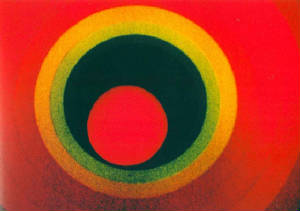
|
| Radio Dynamics, Oskar Fischinger, 1942 |
Hear. Taste. See. Touch. Smell. Move. Dance. Does perfume emit a color?
Does the sound of music connect with the motor system in your brain? Can a touch trigger a mental image?
Of course. Ask any neuroscientist.
|
|
 |
 |
|

